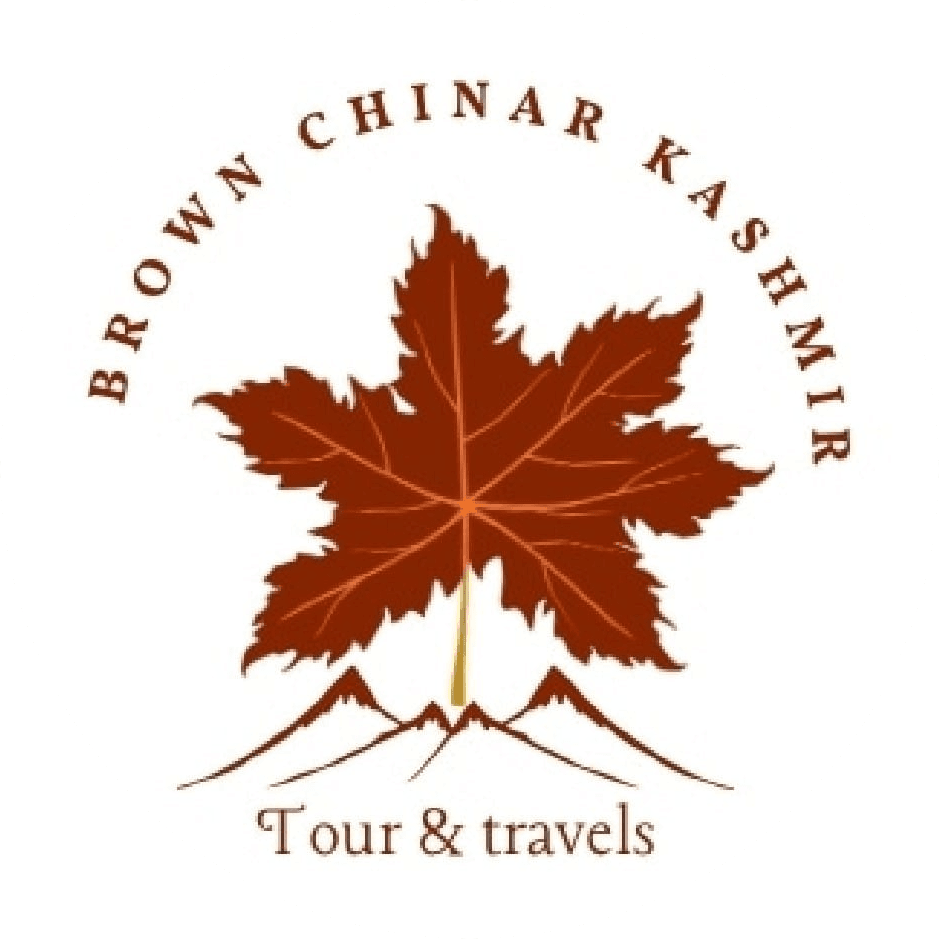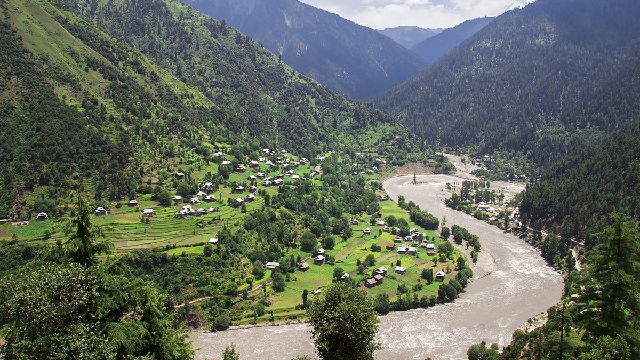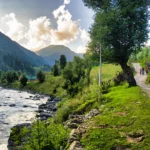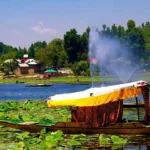Table of Contents
Toggle- Overview
- About Keran Valley
- Keran Valley: A Peep into the Past and Culture
- Geography and Natural Beauty
- The bewitching river Kishanganga
- Best time to visit Keran Valley
- How to Reach Keran Valley
- Things to Do in Keran Valley
- Accommodation in Keran Valley
- Things to Explore Nearest Around Keran Valley
- Safety and Travel Tips before visiting Keran Valley
- Cultural Etiquette and Local Experiences
- Conclusion
- How to book Keran Valley tour online?
- People Also Ask
- What is Keran Valley?
- How do I get to Keran Valley?
- What is the best time to visit Keran Valley?
- Is Keran Valley safe for tourists?
- What are the top things to do in Keran Valley?
- Is there accommodation in Keran Valley?
- How far is Keran Valley from Srinagar?
- Can I visit Keran Valley in winter?
- What is the significance of the Kishanganga River in Keran Valley?
- Is there a trekking trail in Keran Valley?
- What wildlife can I see in Keran Valley?
- Is it possible to fish in the Kishanganga River?
- Are there any cultural attractions in Keran Valley?
- Can I visit Keran Valley as part of a road trip?
- What activities are available for adventure enthusiasts in Keran Valley?
- What are the nearby attractions to visit from Keran Valley?
- Can I visit Neelum Valley from Keran Valley?
- What is the local cuisine like in Keran Valley?
- Do I need permits to visit Keran Valley?
- Is there a local market in Keran Valley?
- What should I pack for a trip to Keran Valley?
- What are the best trekking routes in Keran Valley?
- Is it possible to camp in Keran Valley?
- What is the weather like in Keran Valley?
- Are there any restrictions for tourists visiting Keran Valley?
- Inquiry Form
Overview
One of the most beautiful and least explored places in the world is the Keran Valley. This lies in the state of Jammu and Kashmir, India. Situated at the far north end of the Kashmir region, this off-beat destination would suit nature lovers, adventure enthusiasts, and culture vultures. The Keran Valley with breathtaking landscapes, a peaceful atmosphere, and a rich heritage still waits to be tapped by the mainstream crowds.
In this long article, we will describe all aspects of Keran Valley. From its lovely landscapes and historic importance to what you can have fun with during the trip, so if you are going to visit this amazing valley, this blog will help you with all the information that you need.
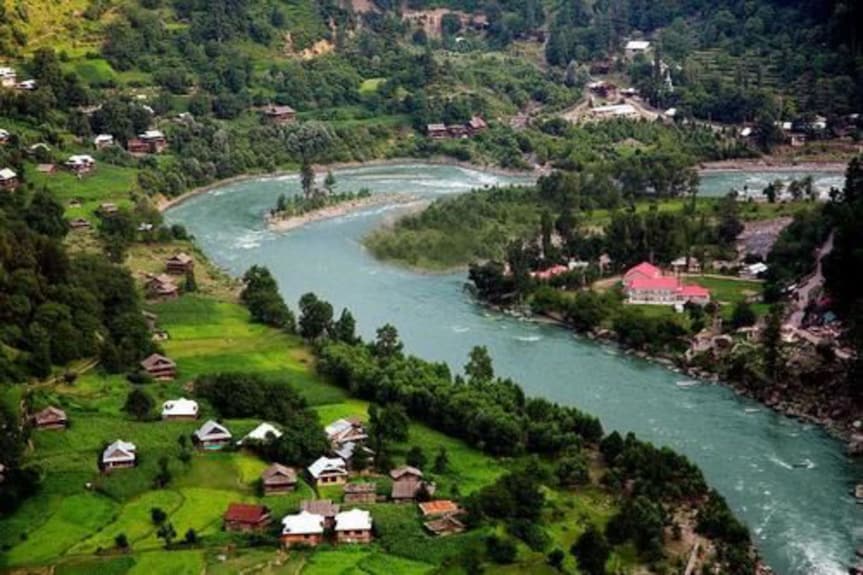
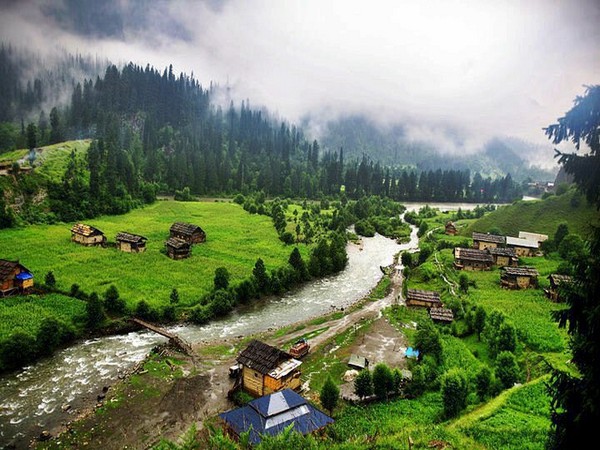
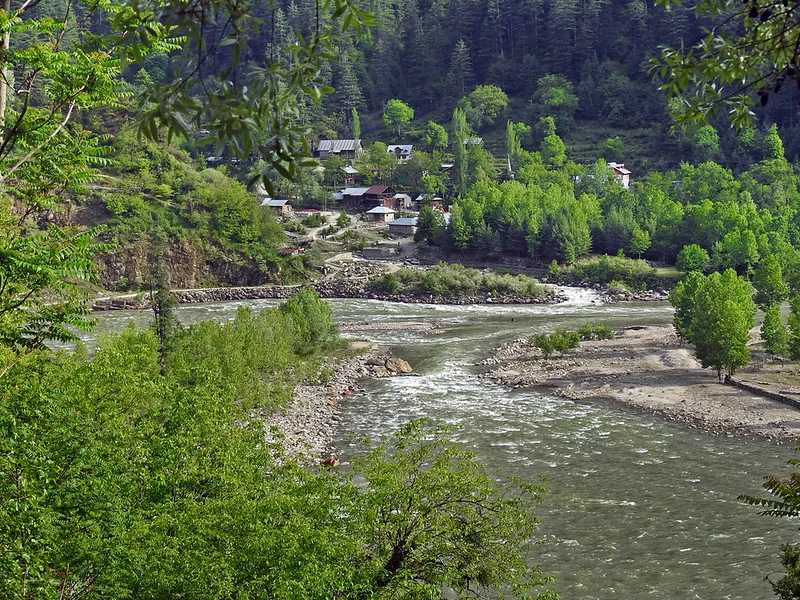
About Keran Valley
Keran Valley is one of the most beautiful, yet relatively lesser-explored valleys in Jammu and Kashmir. It is located in the northernmost region of the state, nestled along the banks of the Kishanganga River. The valley forms part of the larger Kupwara district, characterized by rugged terrain, thick forests, and diverse wildlife.
This region is an excellent amalgamation of natural and cultural importance with snow-capped mountains, calm green meadows, crystal clear rivers, and typical villages. Kashmir is known to the world for many centuries as a favorite tourist destination; however, Keran Valley still lies unexplored and can offer a silent refuge for all who wish to visit this virgin territory in all its virgin beauty.
Whether you prefer isolation, adventure, or just a flavor of local lifestyle, Keran Valley has it all. It has started gradually coming into prominence with regard to adventurous travel and nature photography. Some rare blend of accessibility with unspoiled landscapes makes it interesting.
Keran Valley: A Peep into the Past and Culture
Historical perspectives of Keran Valley are often closely linked up to its larger historical landscape of Kashmir. Historically the valley has significant importance because they were one section of ancient and historical trade linkages that directly connected Kashmir through Central Asia routes. It always played an immense role in their socio-political landscape.
It is next to the LoC-the border of India and Pakistan, thus is of great geo-political value and shrouded with mystique. Due to numerous conflicts that the valley has had to witness for years, yet Keran, as a whole, has proved to be one of the safe tourist destinations. This is because strong and aggressive by nature are local communities, though the past does not hold so bright memories of theirs.
The people of the Keran Valley are mostly comprised of ethnic Kashmiri Muslims. There are large numbers of the Gujjar and Pahari communities as well. The general culture, eating habits, as well as patterns of living life are all the characteristics of Kashmir Valley. This place has fine wooden houses along with colorful fairs and very languid and simple lifestyle along with the good hospitality of their people.
Geography and Natural Beauty
Keran Valley is located at an altitude of about 1,700 meters (5,577 feet) above sea level. Keran Valley can be graded as a relatively low-altitude region compared to most of the other regions that come under the state of Jammu and Kashmir. The ranges of snow-topped mountains and dense forests surrounding the valley are a fairy-tale kind of landscape picture-perfect and ideal for the study and taking of nature photography.
The valley is famous for the perfectly preserved, pristine grounds forming lush meadows, alpine grasslands, and peaceful lakes. Rich flora and fauna abound on the fertile grounds surrounding the valley. Usually, the meadows are carpeted with wildflowers in spring and summer; besides, there is a fragrance and scent in the air of blooming flowers. The region is very rich in biodiversity, including deer, leopards, and different types of birds that can be seen in its forests.
The Keran Valley too has a temperate climate; while summers are relatively cool and cool, the harshness of winter dominates there too. Natural beauty shines well during the season of autumn that colors the otherwise silent valleys with the bright colors red, orange, yellow in and within forests.
The bewitching river Kishanganga
Kishanganga River flows right in the middle of the Keran Valley. It is known as the Neelum River in Pakistan. Originating from the higher reaches of the Kashmir Valley, it snakes its way through the mountains and valleys until it finally joins the Jhelum River.
The crystal clear water river Kishanganga has its own value. The river provides very beautiful bank conditions for very peaceful walks suitable for angling and photography also. It will be a mind-blowing serene get away to spend time here as a tourist relaxing amidst nature all around. The river offers home to many various fish species. Hence, the tourist destination of fishermen who will look forward to try their skills to catch more fishes.
Best time to visit Keran Valley
The best time to visit Keran Valley will depend on what experience you want. The valley remains open all over the year although different seasons would provide different experiences:
- Summer (April to June): The summer season is well suited for trekking, hiking, and camping outdoors. Temperature ranges from 15°C to 25°C, which will enable one to take a good tour of the sight. This season is also very good to visit the valley for enjoying lush green meadows and fine weather.
- Monsoon (July to September): The monsoon may bring freshness to the region; however, it may sometimes bring unpredictable weather conditions, such as landslides or roadblockage occasionally. It is quite advisable to take precautions and check the weather conditions before planning a trip within this period.
- Autumn (October to November): Undeniably, this is the best season to visit Keran Valley as its fall colors are at their most spectacular. Cool weather turns the outdoor excursions picturesque and clear skies have well-suited conditions for photography.
- Winter (December to February): Winter in the Keran Valley is magic in case you love snow. It transforms the valley into a wonderland with all snow-white landscapes, rivers, and fresh air. However, the temperature may decline down low enough to freeze and so it is required that the traveler should prepare himself for cold weather conditions.
How to Reach Keran Valley
Keran Valley is also not very difficult to access, considering how accessible it is from Srinagar. Here’s the way to access the valley:
By Air: The nearest airport is Sheikh-ul-Alam International Airport (SXR) at Srinagar. The other big cities of India are connected through regular flights with Delhi, Mumbai, and Jammu. A taxi or private vehicle from the airport will reach Keran that lies about 120 km from there.
By Road: The road journey from Srinagar to Keran Valley is quite beautiful and gives a view of mountains, rivers, and villages. It takes about 4-5 hours by taxi or private vehicles from Srinagar. One can also use buses and shared cabs available between Srinagar and nearby towns, though they may not reach Keran.
By Train: No train is directly available for Keran Valley. The nearest railway station is in Srinagar. From there, you can go to Keran by road.
Things to Do in Keran Valley
Keran Valley is a treasure trove of activity for nature lovers, adventure enthusiasts, and culture vultures. Be it an adrenaline rush or a relaxing retreat, Keran has something to offer.
1. Trekking and Hiking Trails
There are various trekking trails to Keran Valley which enables you to go through the surrounding hills, forests, and valleys. A few of the most popular trekking trails include:
- Shamsbari Mountain Trek: A treacherous trail passing through thick forests and alpine meadows up to the top of Shamsbari Mountain. From the top, it offers some fantastic views with an overall view of the entire valley.
- Gurais Valley Trek: The trek leads through medium terrains towards a very beautiful valley named Gurais that comprises lush green meadows with the peaks fully covered with white color, namely snow.
2. River Adventures and Angling
There will also be several river adventure opportunities because water-based fun in the river Kishanganga is so attractive, making an invitation of activities for fishing and rafting; moreover, clear waters of Kishanganga comprise fish like trout, and they invite anglers towards this spot.
3. Camping in Nature
The best time to visit this valley is while camping in Keran Valley as it will help you get close to the valley beauty. You will find some campsites alongside riverbanks and meadows where you can spend the night under starry skies, having the serenity of the wild.
4. Local Culture and Traditions
Keran Valley is a culturally rich region where you can explore the traditional lifestyles of the local people. You can visit the villages around the valley, where the local communities still practice agriculture, animal husbandry, and handicrafts. Participate in local festivals and experience the warm hospitality of the locals.
Accommodation in Keran Valley
Keran Valley has a good number of places to stay with everyone. Ranging from resorts to budget hotels and homestays, there is everything at the place.
- Resorts and Hotels: A few of the luxury resorts and hotels along the valley, which offer quite comfortable amenities with breathtaking views of the mountains and rivers around them, offer comfort and peace.
- Home Stays/Guest House: For experience close to nature, home stays and guest houses are to stay which would certainly bring about intermingle with the local residents who will certainly take pride to feed you locally prepared food according to your wishes.
Things to Explore Nearest Around Keran Valley
Keran valley itself is not lonely as other attractions within reach are worthy to visit.
1. Gurais valley
Not much more than a few kilometers away lies a nature lover’s paradise-Gurais Valley. Renowned for its vistas of beauty, the meadows that make it seem so much like a garden, virgin in beauty. This valley is also famous for some of the great trek routes.
2. Keran Bridge
Keran Bridge is the primary attraction of this valley which links the area to other areas of Jammu and Kashmir. The view is really thrilling regarding the river and the mountains.
3. Neelum Valley
The Neelum Valley of Pakistan lies just opposite to Keran Valley at Line of Control. One can’t cross into Pakistan but enjoy the beautiful scene of Neelum Valley by sitting at Indian side and observe all the beauty from Keran.
Safety and Travel Tips before visiting Keran Valley
- Permits: Since Keran is located along the Line of Control, one might require special permits to visit this place. Enquire from the local authorities or a reliable tour operator about the requisite permits.
- Preparation for Weather Conditions: As Keran weather can be unpredictable at times, carry all season clothes with you and prepare for sudden weather conditions, especially during the monsoon and winters.
- Health Precautions: Travelers are sure to face light altitude sickness due to high altitude. Hydrate and avoid over-exertion during the first days of arrival.
Cultural Etiquette and Local Experiences
While traveling to Keran Valley, learn to respect local culture and tradition. The locals are very friendly and will respond accordingly if the local culture is well understood.
- Dress modestly: People in the area are conservative. Be moderate and dress modestly when meeting local people.
- Respect local customs: Learn a few phrases in the local language and always ask for permission before taking photographs, especially in rural areas.
Conclusion
Being truly off the beaten path, a very authentic breathtakingly beautiful location for travelers exploring the natural splendor of the state of Jammu and Kashmir, Keran Valley is more than just great for trekking, camping, fishing, and enjoying the sheer serenity offered by nature and its surroundings in general. Cultural heritage, marvelous landscapes, or warm hospitality that makes it possible to be called so, Keran Valley is considered a must-place for those truly seeking a truly unique travel experience.
If you’re looking to escape the crowds and immerse yourself in the untamed beauty of Kashmir, Keran Valley is the perfect destination. Make sure to plan your trip well, and you’ll be rewarded with an unforgettable experience in one of the most tranquil and enchanting valleys in the region.
How to book Keran Valley tour online?
Contact Brown Chinar at +91 6005039532/+91 9906188874 or Email us at : Enquiry@brownchinarkashmir.com
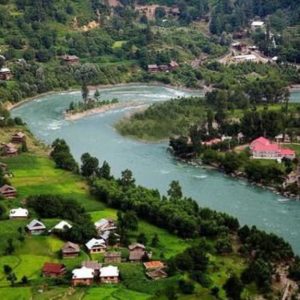
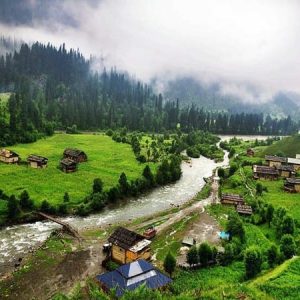
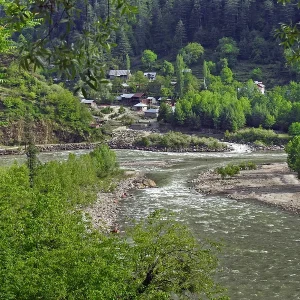
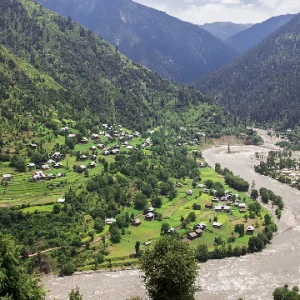
People Also Ask
What is Keran Valley?
Keran Valley is a picturesque and relatively unexplored region located in the Kupwara district of Jammu and Kashmir, India. It is known for its natural beauty, dense forests, snow-capped peaks, and the Kishanganga River that flows through the valley.
How do I get to Keran Valley?
The nearest airport to Keran Valley is Sheikh-ul-Alam International Airport (SXR) in Srinagar. From Srinagar, you can travel by road, which takes approximately 4-5 hours to reach the valley. You can hire a taxi or use private vehicles for transportation.
What is the best time to visit Keran Valley?
The best time to visit Keran Valley is between April to October. During this period, the weather is mild, perfect for outdoor activities like trekking and camping. If you enjoy snow, winter (December to February) is ideal for a snowy adventure.
Is Keran Valley safe for tourists?
Yes, Keran Valley is generally safe for tourists. However, since it is located near the Line of Control (LoC), travelers are advised to stay updated on the security situation and obtain necessary permits from local authorities.
What are the top things to do in Keran Valley?
Top things to do in Keran Valley include trekking to nearby peaks, camping by the Kishanganga River, angling, visiting local villages, and exploring the surrounding meadows and alpine forests.
Is there accommodation in Keran Valley?
Yes, Keran Valley offers several accommodation options including resorts, hotels, guesthouses, and homestays. The region also has camping sites for those who prefer to stay closer to nature.
How far is Keran Valley from Srinagar?
Keran Valley is approximately 120 kilometers away from Srinagar. The drive takes around 4-5 hours, depending on road conditions.
Can I visit Keran Valley in winter?
Yes, winter in Keran Valley is magical, with snow-covered landscapes and freezing temperatures. It is perfect for snow lovers, though travelers need to be prepared for cold conditions and possible road closures due to snow.
What is the significance of the Kishanganga River in Keran Valley?
The Kishanganga River is one of the most prominent features of Keran Valley. The river, known as Neelum River in Pakistan, offers scenic views, opportunities for fishing, and is central to the valley’s natural beauty.
Is there a trekking trail in Keran Valley?
Yes, Keran Valley offers several trekking routes, including the Shamsbari Mountain Trek and the Gurais Valley Trek. These trails take you through dense forests, alpine meadows, and offer stunning views of the region.
What wildlife can I see in Keran Valley?
Keran Valley is home to a variety of wildlife, including deer, leopards, brown bears, and a wide variety of bird species. The forests around the valley also host diverse flora and fauna.
Is it possible to fish in the Kishanganga River?
Yes, fishing is one of the popular activities in Keran Valley. The Kishanganga River is home to various fish species, including trout, making it a great destination for anglers.
Are there any cultural attractions in Keran Valley?
Keran Valley is rich in cultural heritage, with its traditional Kashmiri Muslim and Pahari communities. Travelers can explore local villages, witness traditional festivals, and experience the local way of life.
Can I visit Keran Valley as part of a road trip?
Yes, Keran Valley is a great stop for road trips, especially if you’re traveling through Srinagar or nearby areas like Gurais Valley or Neelum Valley. The scenic roads and landscapes make for a memorable road trip experience.
What activities are available for adventure enthusiasts in Keran Valley?
Adventure enthusiasts can enjoy trekking, river rafting, angling, camping, and even wildlife photography. The rugged terrain and surrounding mountains provide ample opportunities for outdoor activities.
What are the nearby attractions to visit from Keran Valley?
Nearby attractions include Gurais Valley, Neelum Valley, the Keran Bridge, and the Shamsbari Mountain. Each offers a unique experience, whether you’re into trekking, cultural exploration, or scenic beauty.
Can I visit Neelum Valley from Keran Valley?
While Neelum Valley is located in Pakistan, it is just across the border from Keran Valley. You cannot cross the border, but you can enjoy stunning views of Neelum Valley from the Indian side, particularly from Keran Bridge.
What is the local cuisine like in Keran Valley?
The cuisine in Keran Valley is a mix of traditional Kashmiri dishes such as Rogan Josh, Yakhni, Kahwa, and various types of bread. Travelers can enjoy freshly prepared, local meals at homestays or guesthouses.
Do I need permits to visit Keran Valley?
Yes, since Keran Valley is near the Line of Control (LoC), you may need permits to visit. It’s important to check with local authorities or your tour operator to ensure you have the necessary documents.
Is there a local market in Keran Valley?
Yes, Keran Valley has small markets in nearby villages where you can buy local handicrafts, fresh produce, and spices. The markets offer a glimpse into the region’s culture and are perfect for souvenir shopping.
What should I pack for a trip to Keran Valley?
When visiting Keran Valley, pack warm clothing, especially if traveling in winter, comfortable trekking shoes, waterproof gear, sunscreen, and personal medications. If you’re camping, don’t forget sleeping bags and camping equipment.
What are the best trekking routes in Keran Valley?
The best trekking routes in the region include:
- Shamsbari Mountain Trek
- Gurais Valley Trek
- Dawar Valley Trek (a moderate trek through alpine meadows)
These treks take you through rugged terrains and offer panoramic views of the valley.
Is it possible to camp in Keran Valley?
Yes, camping is a popular activity in Keran Valley. Several campsites are set up along the banks of the Kishanganga River and other scenic spots, where travelers can enjoy the beauty of nature while staying close to local flora and fauna.
What is the weather like in Keran Valley?
Keran Valley experiences a temperate climate, with cold winters and mild summers. Summers range from 15°C to 25°C, while winters can drop below freezing. The region also experiences occasional snowfall during the colder months.
Are there any restrictions for tourists visiting Keran Valley?
There are no specific restrictions for tourists, but since Keran Valley is close to the border, it is recommended to stay informed about the security situation. Travelers are advised to follow any travel advisories issued by the government and obtain necessary permits for visiting the area.
